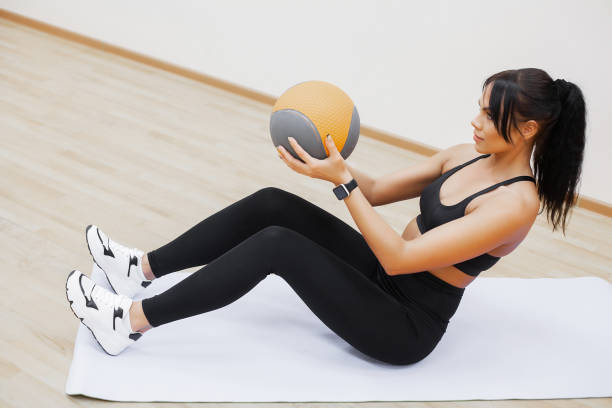Core exercise can strengthen your core, tone your abs and protect you from injury during your workouts. Think of your core as the center of gravity. The stronger it is, the more you’re able to do functional movements and exercises.
Benefits of Core Workouts
If you need more reasons to start doing core exercises, here’s a list:
1. Stronger core muscles
If you want your core muscles to be stronger and firmer, you need to do core exercises. There’s just no other way around it.
2. Improved posture
A strong core leads to good posture. Slumping in chairs and over-extending the neck on the other hand leads to poor posture and you can alleviate this by doing core exercises.
3. Improved balance and performance
Core exercises can help improve a person’s overall balance. Training and running require a good foundation which is why it’s important to have a strong core.
4. Reduced risk of injury
A strong core aids in lowering the risk of injury during exercise, which leads to improved athletic performance.
5. Lower back pain prevention
A lot of people have stiff neck and pain in the lower back. You can prevent this by strengthening your core.
Now that you know just how valuable the core can be, it’s time to think about doing exercises that will strengthen it. The core is comprised of several muscles including:
- Pelvic floor muscles
- Transverse abdominis
- Internal obliques
- Multifidus
- Diaphragm
- Rectus abdominis
- External obliques
- Erector spinae
- Quadratus lumborum
- Hip muscles
By doing workouts at 9 ROUND that focus on your core, you will not only get toned abs, but you will also improve your functional movements and overall performance.
Interested to start working on your core? Here are some exercises you can start with today.
1. High Plank
This workout focuses on the transverse abdominis, rectus abdominis, obliques, glutes, calves, quads and ham strings. Although this is mostly performed by athletes, you can make this exercise easier by not dropping the knees.
With hands and legs on the floor shoulder distance apart, keep your back flat, buttocks tucked in and your core engaged. Squeeze your glutes and legs and round out your shoulders.
2. Glute Bridge
This exercise works out the ham strings, glutes, transverse abdominis, erector spinae. Unlike the high plank, this one is beginner friendly. But if you want more challenge, you can add some weights to your workout or perhaps extending one leg at a time.
To do this workout, lie on your back flat on the floor. Both hands should be on the ground. Then squeeze your glutes as you slowly raise your hips. Remember to keep your abs tight throughout the whole thing. Do 20 reps.
3. V-UPS
This workout focuses on the obliques, transverse abdominis and rectus abdominis. This is an advanced workout.
To do V-Ups, you need to place your arms above your head and lie flat on your back. Then keep your legs straight and your feet close together. Roll your shoulders as you crunch your belly and lift both legs from the floor. If possible, keep the legs straight then form a V as your legs and hands come together. Then go back to your starting position.
4. Plank Knee Crosses
This exercise focuses on the quads, hip flexors, rectus abdominis, transverse abdominis, and obliques. To do plank knee crosses, you need to sit with your butt on the floor. Then lift your legs 45 degrees as you lean your torso backwards. Try to keep your legs straight and engage your core without arching your back. Hold your arms straight and then pump your arms down and up slowly.
5. Low Plank Twist
This core exercise focuses on the obliques, glutes, quads, rectus and transverse abdominis. Both beginner and advanced levels can do this. To do this, start by going into low plank placing your elbows under your shoulder and your toes firmly planted on the ground. As you keep your core tight, your body should be straight. Then slowly raise your hips to one side, and then to the other. Then return to center.
Check out this video to help you determine if you have a weak or strong core:
